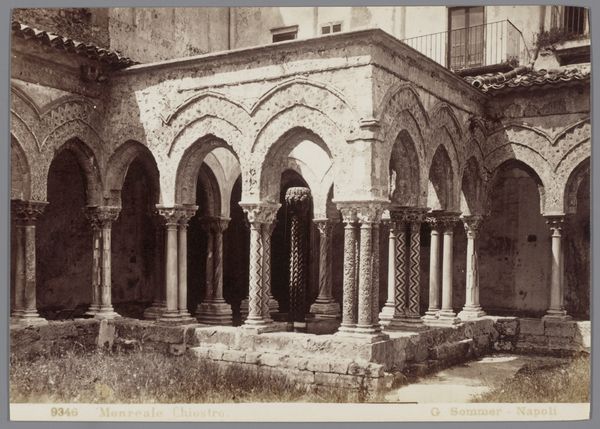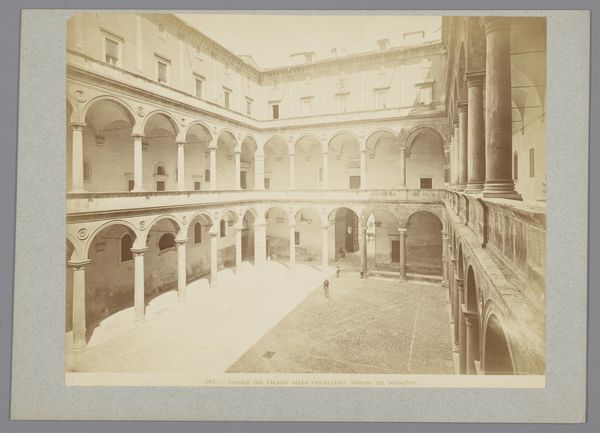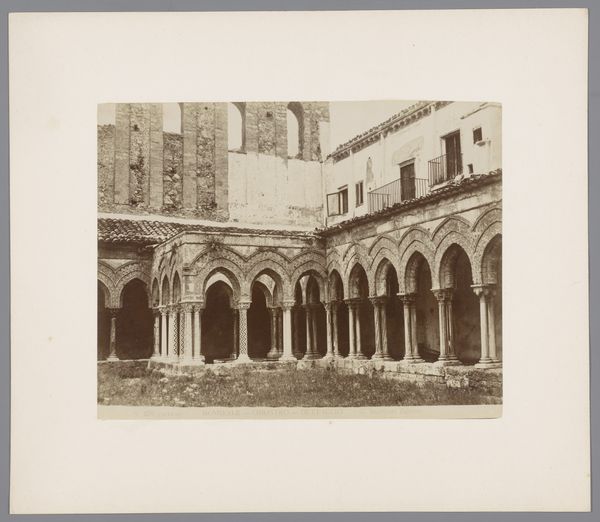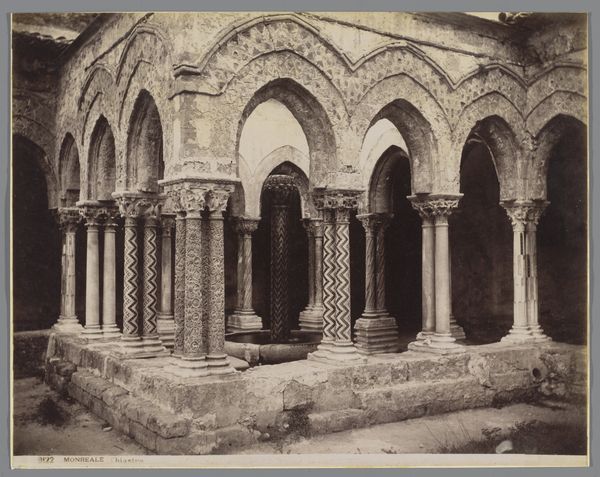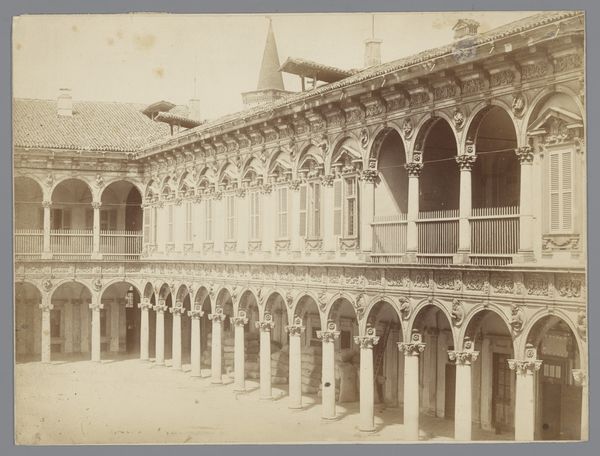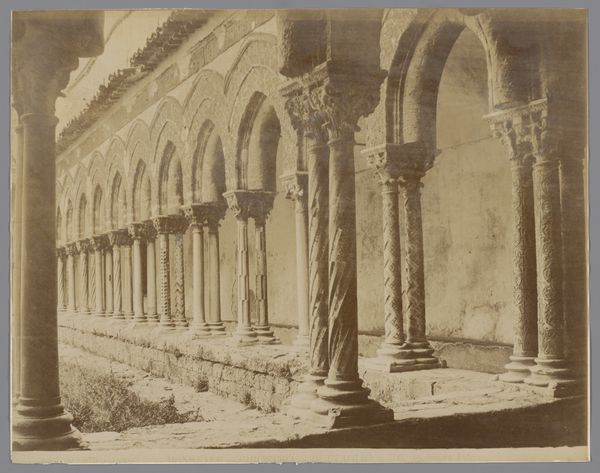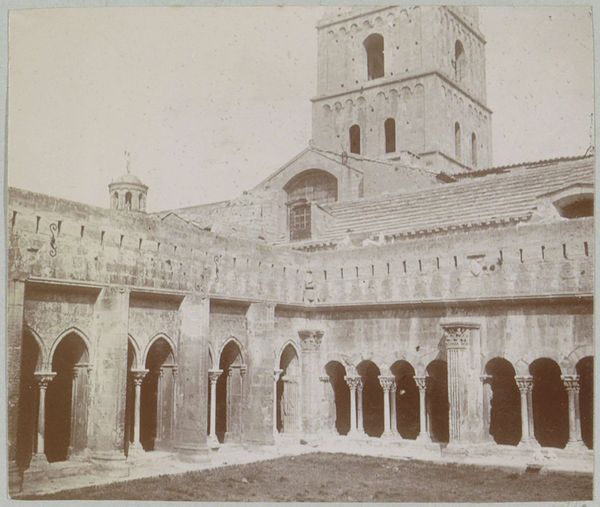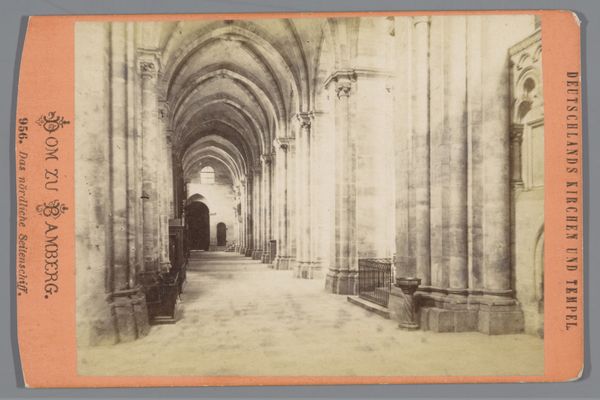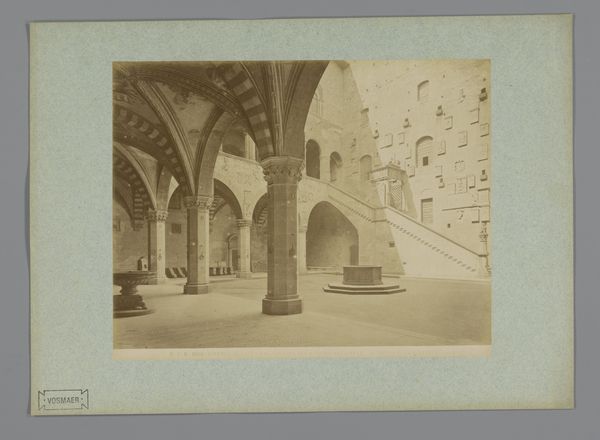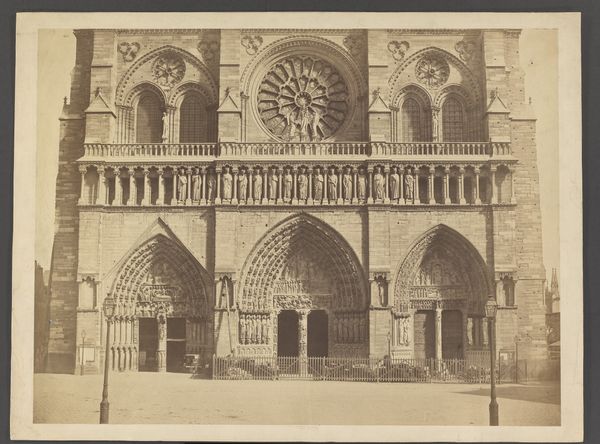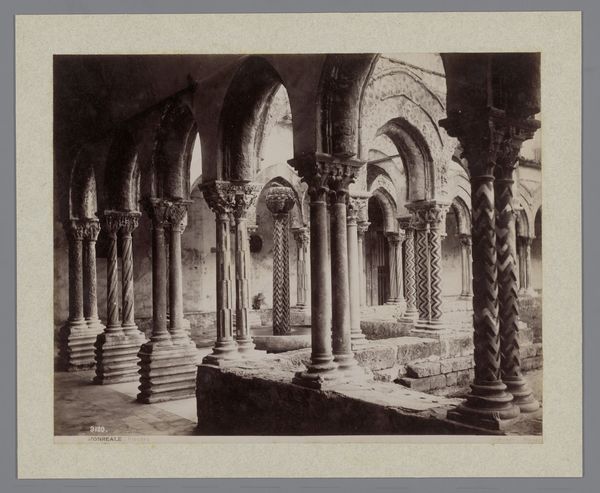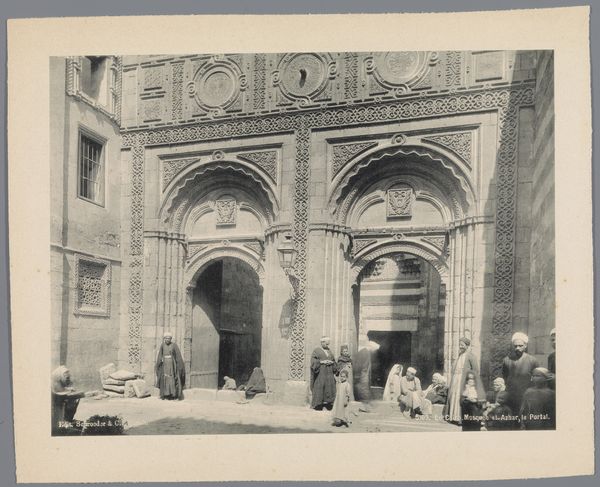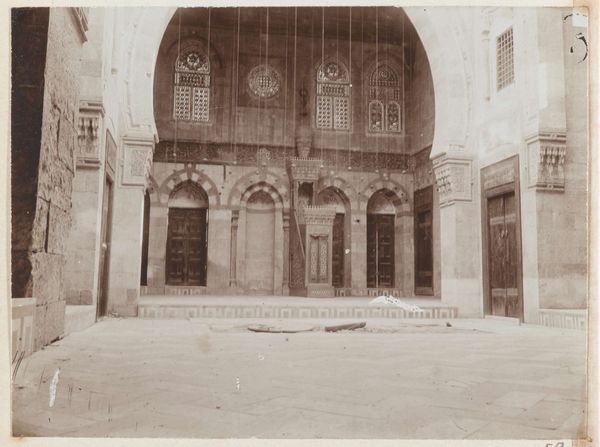
photography, gelatin-silver-print, architecture
#
medieval
#
landscape
#
historic architecture
#
photography
#
gelatin-silver-print
#
watercolor
#
architecture
#
realism
#
historical building
Dimensions: height 196 mm, width 249 mm
Copyright: Rijks Museum: Open Domain
Editor: This photograph, "Kloostergang van de dom van Monreale," captures the cloisters of Monreale Cathedral, taken sometime between 1856 and 1914 by Giuseppe Incorpora, using a gelatin silver print. It has such a serene feel, almost dreamlike. What's your take on this piece? Curator: The cloister, historically a space of refuge and contemplation, here takes on a particular resonance when viewed through the lens of colonial history and power. How might we read this image, not just as a representation of architectural beauty, but as a document reflecting the complex relationship between European identity and the appropriation of cultural heritage in places like Sicily? Consider the power dynamics at play when European photographers documented and "collected" images of foreign lands. Editor: That’s an interesting point. I hadn't really considered the photographer's position. It complicates the romantic feel I initially got. Are you suggesting the image might reinforce a sense of European ownership over Sicilian culture? Curator: Precisely! This cathedral, a testament to the cultural fusion of Norman, Arab, and Byzantine influences, is framed through a European gaze. The very act of photographing and archiving these spaces can be interpreted as a form of claiming and controlling their narrative. How do we challenge that dominant narrative and allow space for Sicilian voices and perspectives? Editor: So, by understanding the photographer’s perspective, we can start to unpack some of the historical baggage attached to these kinds of images, opening the way to different interpretations? Curator: Absolutely! By critically engaging with the historical and social context of images like these, we move beyond mere aesthetic appreciation and towards a deeper understanding of power, identity, and representation. Editor: That's given me a lot to think about. Thanks for expanding my perspective! Curator: My pleasure. Always remember to question whose story is being told and who is being silenced in the visual record.
Comments
No comments
Be the first to comment and join the conversation on the ultimate creative platform.
